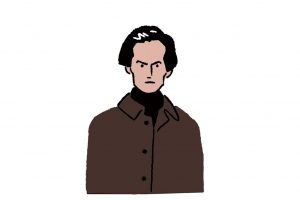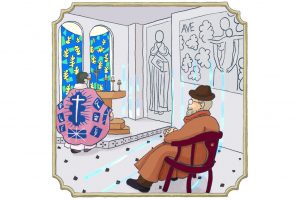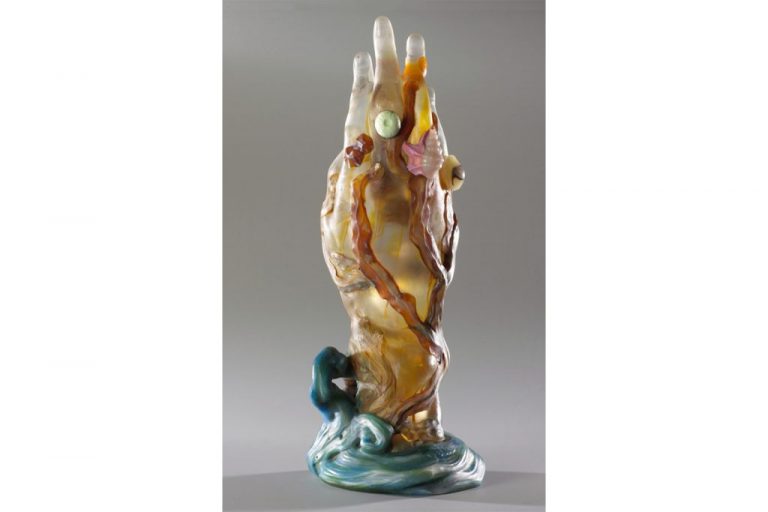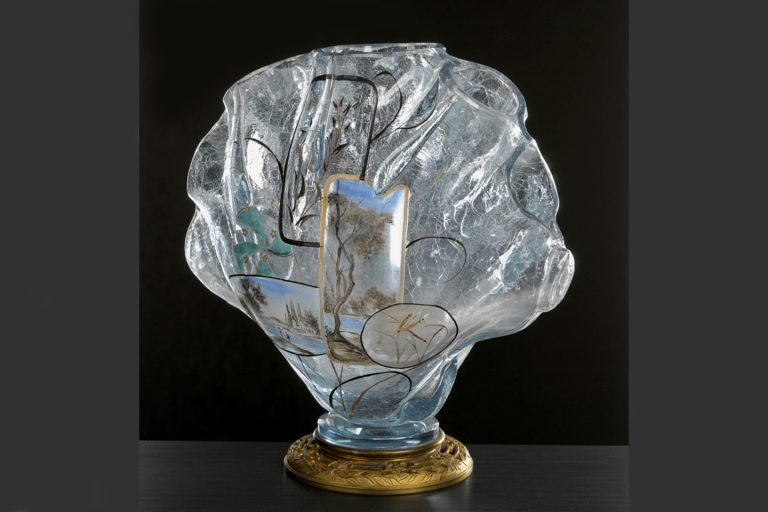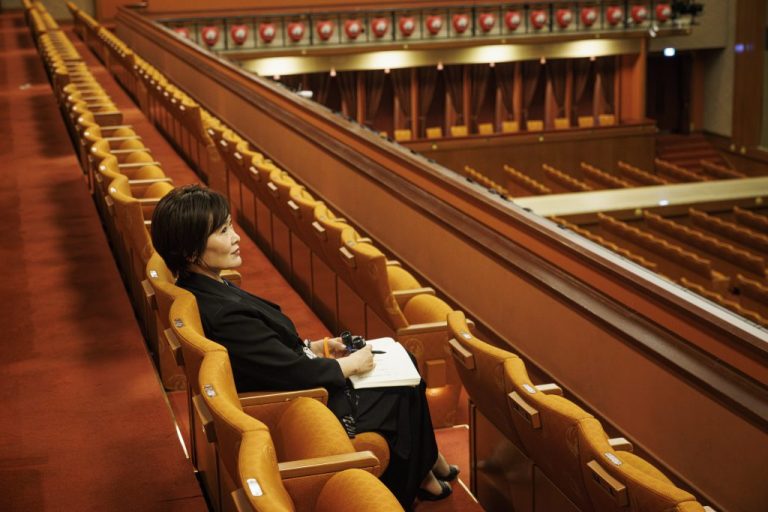Start as an Entertainer
In 1482, at the age of 30, da Vinci gained the patronage of Ludovico Sforza, a powerful figure in Milan. His main duties at the court involved directing theater productions, developing stage equipment, and planning parades. The flying devices and other objects depicted so often in his manuscripts are thought to have been developed for the stage. His methods for suspending mechanical birds and actors in the air and other devices such as rotating stages would lead to subsequent scientific research.
Leonardo da Vinci
Examining artists
No.027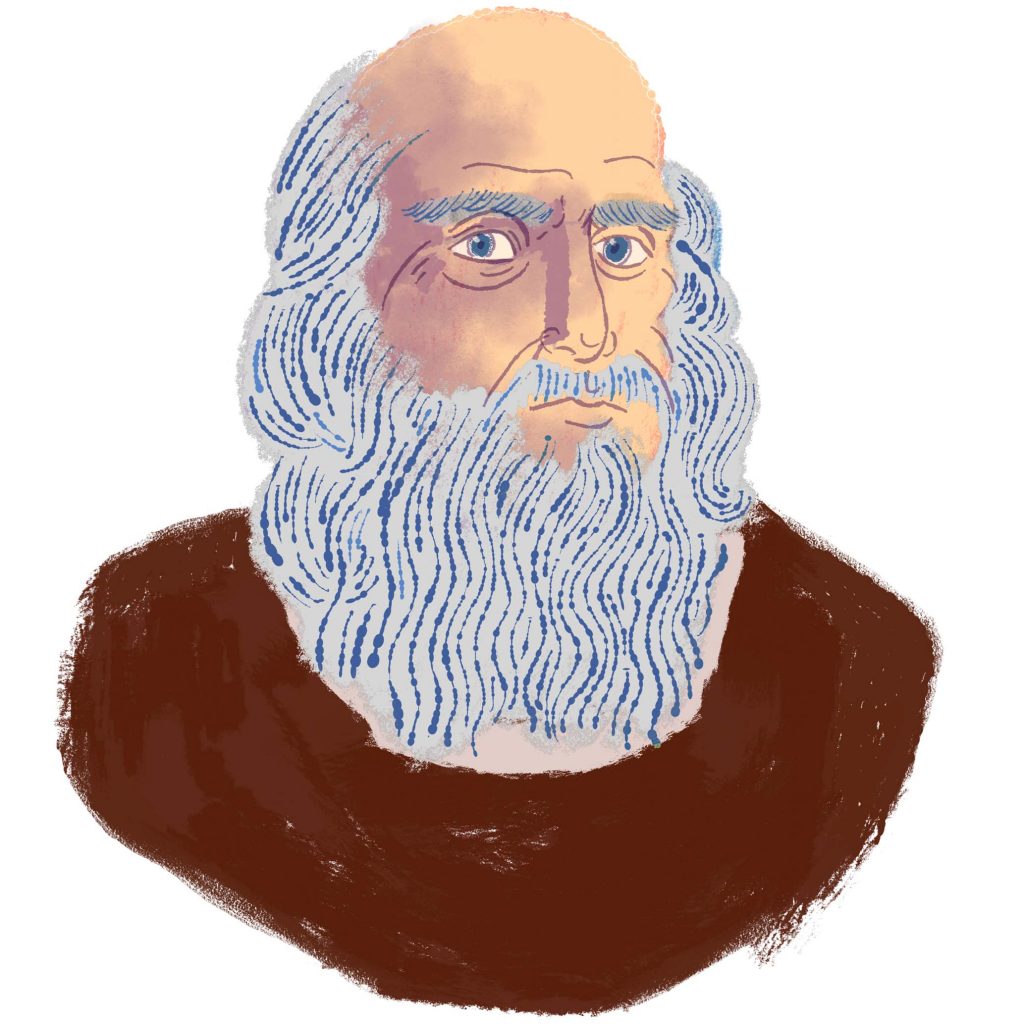
Well-versed in a diverse range of disciplines that include not only painting, but subjects from medicine and biology to physics and engineering, the quintessential Renaissance artist Leonardo da Vinci came to be known as the universal genius. Though even today in 2019, 500 years after his death, much remains shrouded in mystery, he has clearly had immeasurable influence through the respect he gained from artists and scholars alike.
Illustration: Sora Toyoshima
Leonardo da Vinci (1452-1519)
Leonardo da Vinci was born to a notary father and a peasant mother in Vinci, a small village in the outskirts of Florence in central Italy. He began his education at the studio of the artist Andrea del Verrocchio at around the age of 14 and played multiple roles in the courts of Milan and Florence from his 30s on. His world class masterpieces The Last Supper (circa 1495 – 1498) and Mona Lisa (circa 1503 – 1505), as well as his handwritten research records on a wide variety of topics, still attract a great many people to this day.
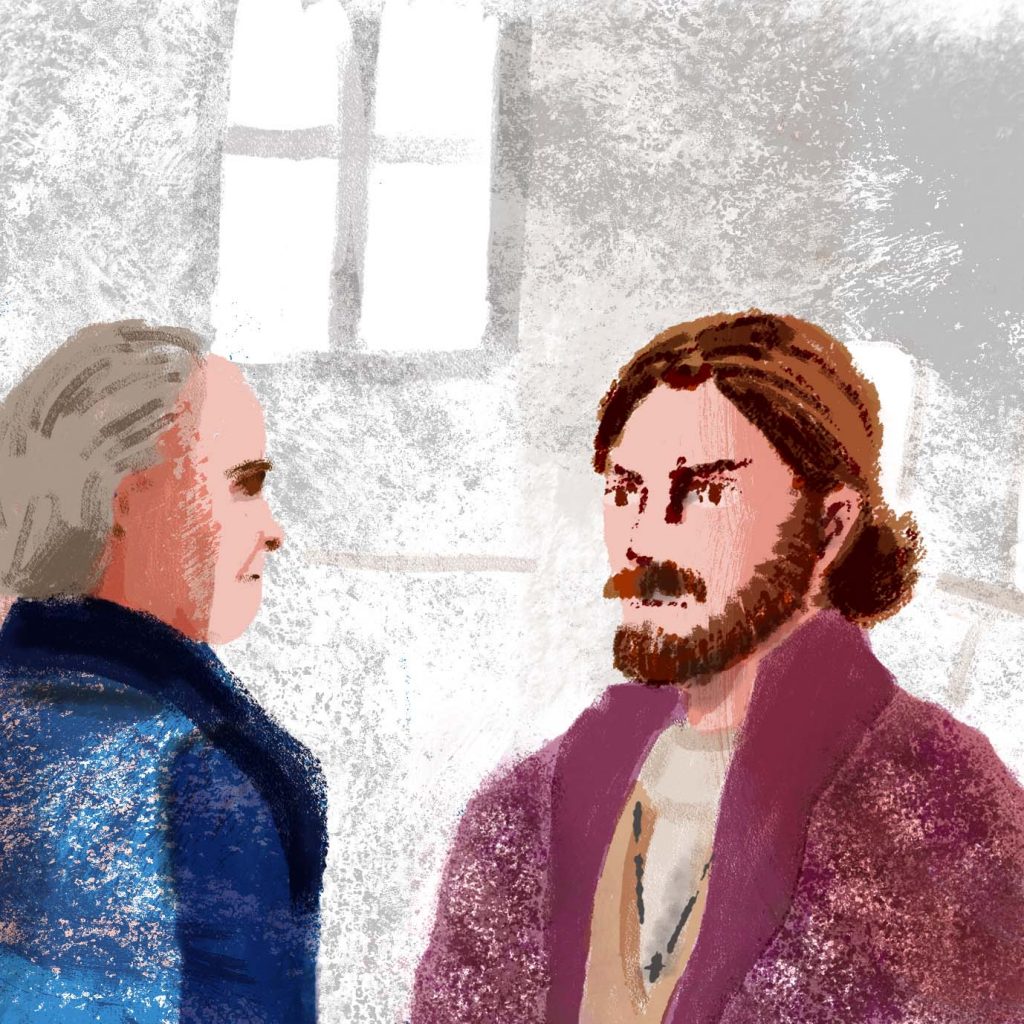
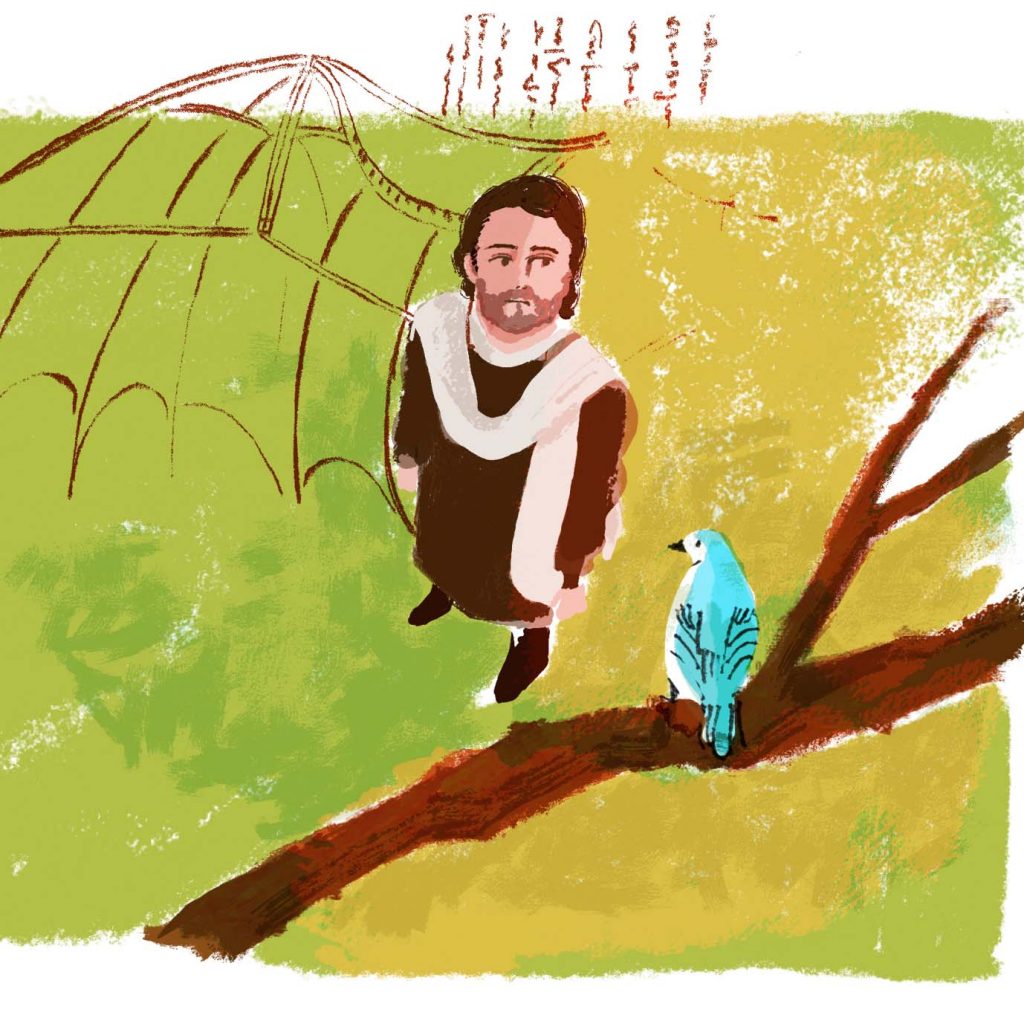
A Cross-Disciplinary Thinker
Leonardo da Vinci linked his findings in various fields of study through analogous thought, inferring similar attributes from similarities in shape or form. For example, observing the flow of water, he delved into the mechanism of flight in which birds skillfully catch the wind to soar through the sky, as well as the circulation of blood through body, which could not be seen. He also applied the form of swirling water to humans’ curly hair.
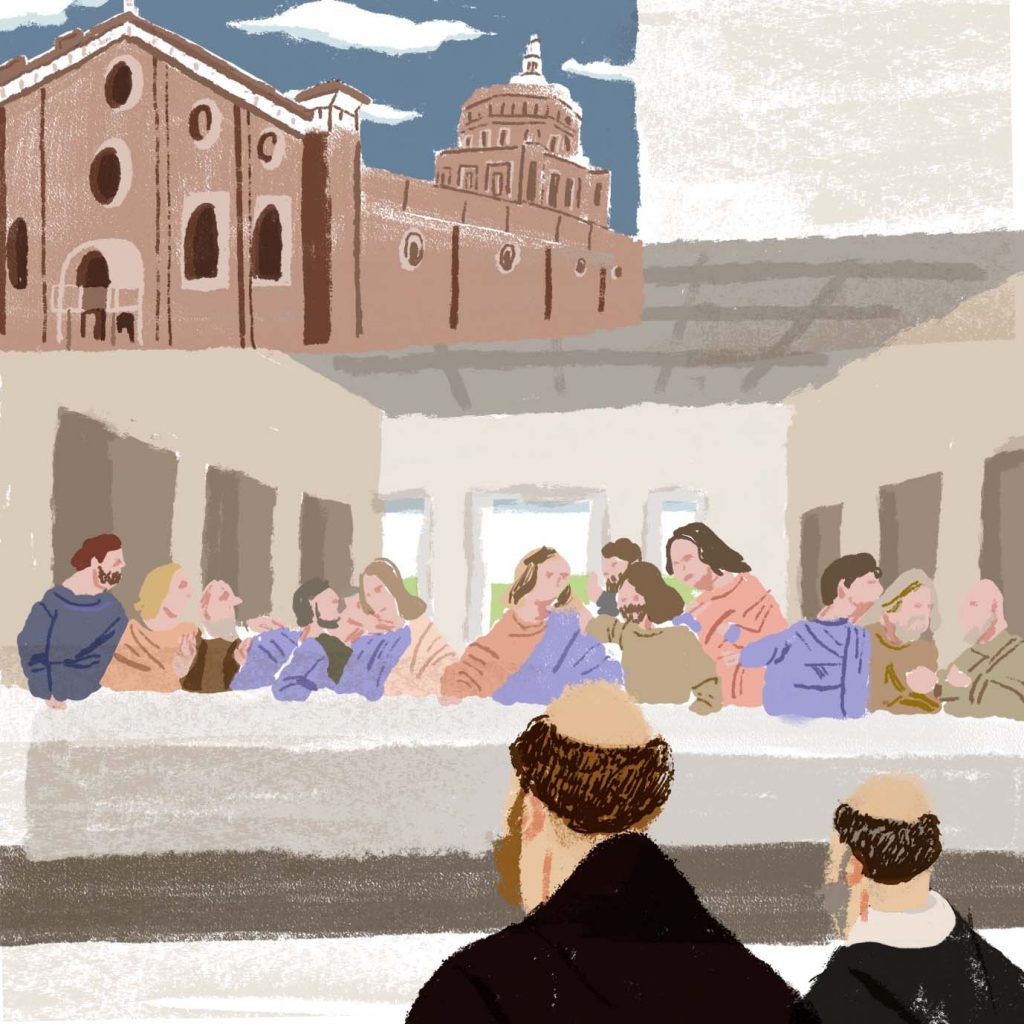
The Smile That Puzzles
Begun in 1503, the Mona Lisa was the culmination of lifelong effort. It was painted in the sfumato technique using multiple layers of diluted oil paint less than 1mm thick with lines blended with the fingertip. With this technique, the eye receives light reflected off different paint layers so the eye views subtly changing images depending on the angle and light. <End>
Cooperation: Hidehiro Ikegami (Professor, Tokyo Zokei University)
Japanese original text: Yasuna Asano
Sora Toyoshima
Illustrator. Born 1980 in Ibaraki Prefecture. Graduated from PALETTE CLUB SCHOOL.
Works with both Japanese and overseas clients, mainly in areas of magazine, advertisement, websites, and apparels.
http://soratoyoshima.net


